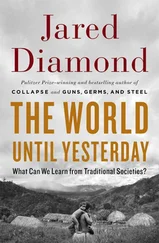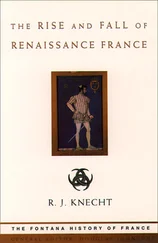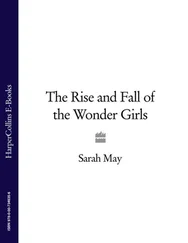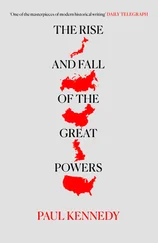Jared Diamond - The rise and fall of the third chimpanzee
Здесь есть возможность читать онлайн «Jared Diamond - The rise and fall of the third chimpanzee» весь текст электронной книги совершенно бесплатно (целиком полную версию без сокращений). В некоторых случаях можно слушать аудио, скачать через торрент в формате fb2 и присутствует краткое содержание. Год выпуска: 1991, ISBN: 1991, Издательство: RADIUS, Жанр: Биология, на английском языке. Описание произведения, (предисловие) а так же отзывы посетителей доступны на портале библиотеки ЛибКат.
- Название:The rise and fall of the third chimpanzee
- Автор:
- Издательство:RADIUS
- Жанр:
- Год:1991
- ISBN:0-09-174268-4
- Рейтинг книги:4 / 5. Голосов: 1
-
Избранное:Добавить в избранное
- Отзывы:
-
Ваша оценка:
- 80
- 1
- 2
- 3
- 4
- 5
The rise and fall of the third chimpanzee: краткое содержание, описание и аннотация
Предлагаем к чтению аннотацию, описание, краткое содержание или предисловие (зависит от того, что написал сам автор книги «The rise and fall of the third chimpanzee»). Если вы не нашли необходимую информацию о книге — напишите в комментариях, мы постараемся отыскать её.
The rise and fall of the third chimpanzee — читать онлайн бесплатно полную книгу (весь текст) целиком
Ниже представлен текст книги, разбитый по страницам. Система сохранения места последней прочитанной страницы, позволяет с удобством читать онлайн бесплатно книгу «The rise and fall of the third chimpanzee», без необходимости каждый раз заново искать на чём Вы остановились. Поставьте закладку, и сможете в любой момент перейти на страницу, на которой закончили чтение.
Интервал:
Закладка:
The sole people in the world about whom we can be certain that they spent the last 10,000 years in the same location were the natives of Tasmania. Lying south of Australia, at the temperate latitude of Chicago or Vladivostok, Tasmania used to be connected to Australia until it was cut off by rising sea levels 10,000 years ago and became an island. Since modern Tasmanian natives did not have boats capable of going more than a few miles, we know that they were derived from colonists who walked out to Tasmania at the time of its connection to Australia, and who remained there continuously until they were exterminated by British colonists in the Nineteenth Century (Chapter Sixteen). If any people had enough time for natural selection to match their skin colour to their local temperate-zone climate, it was the Tasmanians. Yet they had blackish skins, supposedly adapted to the Equator.
If the case for natural selection of skin colour seems weak, that for hair colour and eye colour is virtually non-existent. There are no consistent correlations with climate, and not even any half-plausible theories for the supposed advantage lent by each colour type. Blonde hair is common in cold, wet, dimly lit Scandinavia and also among Aborigines of the hot, dry, sunny desert of central Australia. What do those two areas have in common, and how does being blonde help both Swedes and Aborigines to survive? Do freckles and red hair help Irishmen catch leprechauns? Blue eyes are common in Scandinavia and supposedly help their owners see farther in dim, misty light, but that speculation is unproven, and all my friends in the even dimmer, mistier mountains of New Guinea see just fine with their dark eyes.
The racial traits for which it seems most absurd to seek an explanation based on natural selection are our variable genitalia and secondary sex characteristics. Are hemispherical breasts an adaptation to summer rainfall and conical breasts an adaptation to winter fog, or vice versa? Do the protruding labia minora of Bushmen women protect them against pursuing lions, or reduce their water losses in the Kalahari Desert? You surely don't think that men with hairy chests can thereby keep warm while going shirtless in the Arctic, do you? If you do think so, then please explain why women do not share hairy chests with men, since women also have to keep warm. Facts such as these were what made Darwin despair of imputing human racial variation to his own concept of natural selection. He finally Qismissed the attempt with a succinct statement: 'Not one of the external differences between the races of man are of any direct or special service to him. When Darwin came up with a theory that he preferred, he termed it sexual selection' to contrast with natural selection, and he devoted an entire book to explaining it. The basic notion behind this theory is easily grasped. Darwin noted many animal features that had no obvious survival value but that did play an obvious role in securing mates, either by attracting an individual of the opposite sex or by intimidating a rival of the same sex. Familiar examples are the tails of male peacocks, the manes of male lions, and the bright red buttocks of female baboons in oestrus. If an individual male is especially successful at attracting females or intimidating rival males, that male will leave more descendants and will tend to pass on his genes and traits—as a result of sexual selection, not natural selection. The same argument applies to female traits as well.
For sexual selection to work, evolution must produce two changes simultaneously: one sex must evolve some trait, and the other sex must evolve in tandem a liking for that trait. Female baboons could hardly afford to flash red buttocks if the sight revolted male baboons to the point of their becoming impotent. As long as the female has it and the male likes it, sexual selection could lead to any arbitrary trait, just as long as it does not impair survival too much. In fact, many traits produced by sexual selection do seem quite arbitrary. A visitor from outer space who had yet to see humans could have no way of predicting that men rather than women would have beards, that the beards would be on the face rather than above the navel, and that women would not have red and blue buttocks.
That sexual selection really can work, at least in birds, was proved by an elegant experiment carried out by the Swedish biologist Make Andersson on the long-tailed widowbird of Africa. In this species the male's tail in the breeding season grows to 20 inches long, while the female's tail is only 3 inches. Some males are polygamous and acquire up to six mates, at the expense of other males who get none. Biologists had guessed that a long tail served as an arbitrary signal by which males attracted females to join their harem. Andersson's test was to cut off part of the tail from nine males until their tails were only 6 inches long. He then glued those cut segments to the tails of nine other males to give them 30-inch tails, and he waited to see where the females built their nests. It turned out that the males with the artificially lengthened tails attracted on the average over four times as many mates as the males with artificially shortened tails. Perhaps our first reaction to Andersson's experiment is: those dumb birds! Imagine a female selecting a particular male to father her offspring merely because his tail is longer than other males' tails! But before we get too smug, let's consider again what we learned in the last chapter about how we humans select our own mates. Are our criteria such good indicators of genetic worth? Do not some men and women set disproportionate value on the size or form of certain body parts, which are really nothing more than arbitrary signals for sexual selection? Why did we evolve to pay any attention at all to a beautiful face, which is useless to its owner in the struggle for survival?
In animals some of the traits that vary racially are ones produced by sexual selection. For instance, lions' manes vary in length and in colour. Males of the astrapia birds of paradise in New Guinea have fancy tails to display to females, but different populations evolved tails of different shapes and colours. From west to east, the tails are broad and purple, short and white-based, very long and white, long and purple, and broad and purple again. Similarly, snow geese occur in two colour phases, a blue phase commoner in the western Arctic and a white phase commoner in the eastern Arctic. Birds of each phase prefer a mate of the same phase. Could human breast shape and skin colour similarly be the outcome of sexual preferences that vary arbitrarily from area to area? After 898 pages Darwin convinced himself that the answer to this question was a resounding 'yes'. He noted that we pay inordinate attention to breasts, hair, eyes, and skin colour in selecting our mates and sex partners. He noted also that people in different parts of the world define beautiful breasts, hair, eyes, and skin by what is familiar to them. Thus, Fijians, Hottentots, and Swedes each grow up with their own learned, arbitrary beauty standards, which tend to maintain each population in conformity with those standards, since individuals deviating too far from the standards would find it harder to obtain a mate. Darwin died before his theory could be tested against rigorous studies of how people actually do select their mates. Such studies have proliferated in recent decades, and I summarized the results in Chapter Five. There I showed that people tend to marry individuals who resemble themselves in every conceivable character, including hair and eye and skin colour. To explain that seeming narcissism of ours, I reasoned that we develop our beauty standards by imprinting on the people we see around us in childhood—especially on our parents and siblings, the people of which we see the most. But our parents and siblings are also the people to whom we bear the strongest physical resemblance, since we share their genes. Thus, if you are a fair-skinned, blue-eyed blonde who grew up in a family of fair-skinned, blue-eyed blondes, that is the sort of person whom you will consider most beautiful and will seek as a mate. In the meantime, my dark-skinned, dark-haired New Guinea friends were growing up with other New Guineans and learning to regard fair-skinned, blue-eyed blondes as grotesquely revolting.
Читать дальшеИнтервал:
Закладка:
Похожие книги на «The rise and fall of the third chimpanzee»
Представляем Вашему вниманию похожие книги на «The rise and fall of the third chimpanzee» списком для выбора. Мы отобрали схожую по названию и смыслу литературу в надежде предоставить читателям больше вариантов отыскать новые, интересные, ещё непрочитанные произведения.
Обсуждение, отзывы о книге «The rise and fall of the third chimpanzee» и просто собственные мнения читателей. Оставьте ваши комментарии, напишите, что Вы думаете о произведении, его смысле или главных героях. Укажите что конкретно понравилось, а что нет, и почему Вы так считаете.












